Jose Andres’ flagship restaurant in the city opened in 2003, originally having just six seats but now relocated and having a dozen chairs. Mr Andre worked at El Bulli for three years, and after that moved to the USA and after a time in New York. In 1993 he became head chef at a new Washington DC tapas bar called Jaleo, which subsequently went on to open several other branches. Mr Andres now has a restaurant empire and set up a charitable foundation that provides disaster relief. The menu format is, you guessed it, a no-choice tasting menu. You have to pre-purchase tickets, which works out at $363 (£284) per person once you factor in the assorted taxes and service charge before you have had as much as a sip of water. This is rapidly getting into three star Paris territory in terms of pricing.
The wine list had 86 bottles on offer, ranging in price from $80 to $7,000. Sample labels were Vintage Tunina 2012 at $160 for something that you can find in the high street for $59, the lovely Kistler Vine Hill Chardonnay 2015 at $195 compared to its retail price of $118, and Vega Sicilia Valbuena 5 vintage 2007 at $395 for a wine that will set you back $140 in the shops. At the posh end of the list, Drouhin Batard Montrachet 2008 was $850 compared to its retail price of $422, and Chateau Latour 1990 was $2,500 for a wine whose current market value is $900
The room has just a dozen seats, arranged around a central kitchen arc, where the chefs work directly in front of the diners. The meal began with an El Bulli classic, the liquid olives, which were invented there in 2005. Strained olive juice is mixed with xantham and calcium lactate carbonate, blended and scooped with a spoon into an alginate bath before refrigerating. The result is an olive with a liquid centre. This is an undeniably iconic dish, but at the end of the day it tastes, well, a bit like an olive. It was never something I have been particularly convinced by as a food experience, though as a piece of chemistry it is very clever, and these were certainly executed well (16/20).
Coca de cebolla is a traditional Catalan flatbread where strips of flatbread dough are covered with reduced onion juice and olives, and topped here with cheese and thyme. The result was quite crunchy, and combination of cheese and onion flavours worked really well - a delicious creation (18/20). Beet pizelle, a kind of waffle cookie originally from Abruzzo, was paired with oscietra caviar from Israel (16/20). This was very pleasant, the waffle having good texture, the caviar nice, though there are limits to how culinarily exciting this was likely to be (16/20). A foie gras “bomb” is made by dipping a hollow ring mould in hot isomalt syrup, filled with foie gras which is coated by the syrup as it falls, resulting in an edible transparent sugar shell. The shell shatters as you bite into it, releasing the flavour of the foie gras. This molecular technique seems to me to have more point than some, as the texture contrast created is appealing. The result is a lovely explosion of foie gras flavour (17/20).
This was followed by a “banh mi”, a Vietnamese sandwich style where the baguette is split lengthwise and then filled. Here the sandwich filling was Dungeness crab with herbs in an apple meringue flavoured baguette. I thought that this worked really well, the crab and apple being a classic flavour combination, the bread having lovely texture, the balance of the filling spot on (18/20). As an aside, I always smile when I see Dungeness crab on an America menu, as to a British ear the word Dungeness is associated with a nuclear power station in Kent - rather as if you had marketed your crab as “Three Mile Island crab”.
The next dish was unagi salmorejo, an Andalusian puree of bread, tomatoes, oil, pimento and garlic, topped here with freshwater eel. This was gorgeous, the eel flavour well able to stand up to the slightly spiciness of the chilli pepper (18/20). This was followed by Parmesan Danish with lemon marmalade and truffle, savoury take on a Danish pastry. This was particularly impressive, the pastry texture superb and the richness of the Parmesan cut nicely through by the lemon, the whole dish lifted by the truffle (19/20). Clam shell broth was flavoured with snail and snail eggs, served in a clam shell and scented with blowtorched rosemary. While the rosemary was a nice idea, it was hard to get excited about the snail and clams, nice though the presentation was (13/20).
White asparagus toffee had spears of asparagus embedded within caramel, an idea which worked really well, based as its as around some top class white asparagus from the Loire Valley. Provenance is all when it comes to asparagus, and this particular one was top notch (easily 18/20). After this dish was sunchoke (Jerusalem artichoke) that had been cooked in brown butter and combined with Danish hay cheese. This may not sound like a promising idea but the result was remarkably good. The presentation was lovely but more importantly the flavour of the Jerusalem artichokes was fabulous, the pairing with the cheese a surprising success on the palate (19/20).
Grilled turbot came with chestnut honey and was topped with crisp fish skin. The combination was reasonable, the turbot itself having good rather than dazzling flavour, though the texture contrast of the fish skin worked well (16/20). This was followed by a large morel from Oregon that had been stuffed with morel cream and then grilled, served with Californian peas and a little mint. Peas and morels are a great combination, but with such a simple dish the quality of the ingredients is everything, and both the peas and the morel had lovely flavour (18/20).
The next dish was gigante bean flavoured with Iberico ham and olive oil. This dish was just odd, resulting in something that had a texture resembling gnocchi and being quite fatty (13/20 at best). The next dish was also a dud, pancetta Iberico pork belly with oscietra caviar and bean sauce. The pancetta was overly fatty and did not combine very well with the Bulgarian caviar, and the bean sauce didn’t add much. The dish was crying out for something acidic. I am a big fan of Iberico ham, but this dish didn’t really show it off well (13/20 is kind). Braised lamb neck and goat milk and preserved rhubarb with goat milk sauce was prettily garnished with edible flowers but had rather mild and not especially interesting flavour, though the rhubarb did add a little interest (15/20).
The first dessert course was huckleberry and hibiscus, a kind of ice cream sandwich, and was very enjoyable (16/20). Following this was soy cured egg yolk custard made to resemble a fried egg, with a walnut praline and bergamot oil, with Madagascar vanilla ice cream. This was lovely, the walnut flavour coming through well and the vanilla of high quality; a clever dish (18/20) Finally there was a fried doughnut, and a very fine one indeed. This had great texture and comforting sugary flavour, the kind of doughnut that Homer Simpson dreams of (18/20). With coffee there was a selection of petit fours including cafe con leche, a coconut wheel, key lime pie bonbon, saffron apple, honeycomb, passion fruit caterpillar, yoghurt leaf and rhubarb “binchotan”.
Service was excellent, the staff being very attentive and happy to answer any questions. The wine bill on the night, which to be fair was of Bacchanalian proportions, came to $559 per person, bringing the total cost per person to $922 (£723). If you just shared a modest bottle of wine between two people then a typical cost per person would be about $440 (£345), so this is not a cheap night out. Despite the cost, this was a generally impressive meal, let down only by a dip in standard towards the end of the savoury dishes, which was a pity as the earlier dishes had been really impressive, and in some cases superb.






























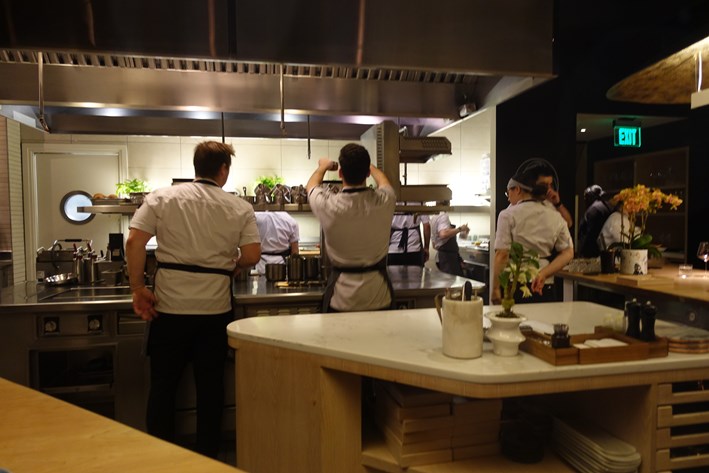
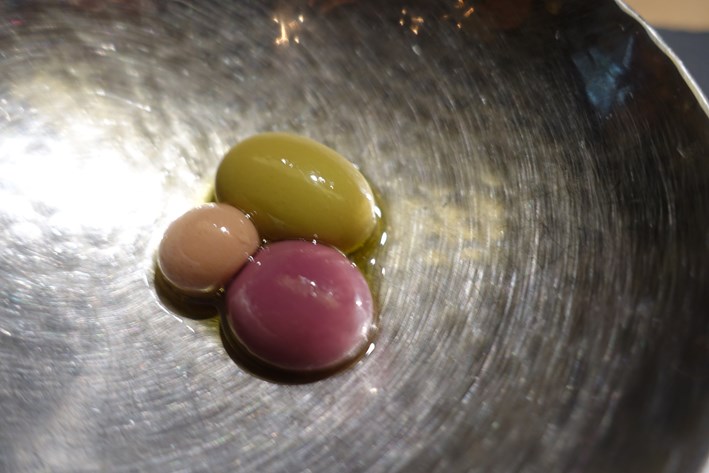
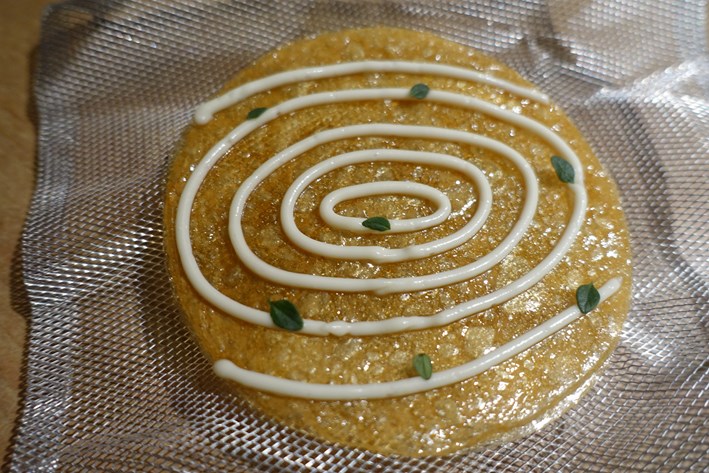
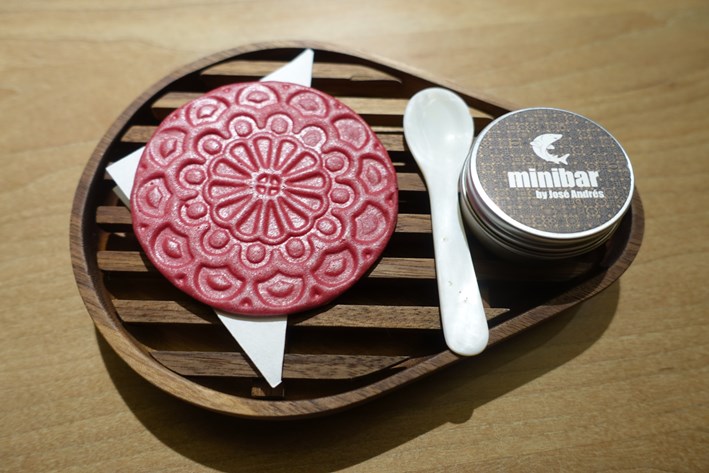
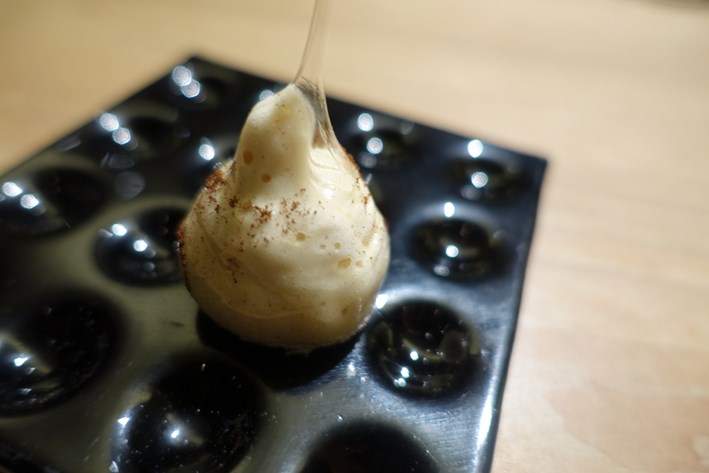
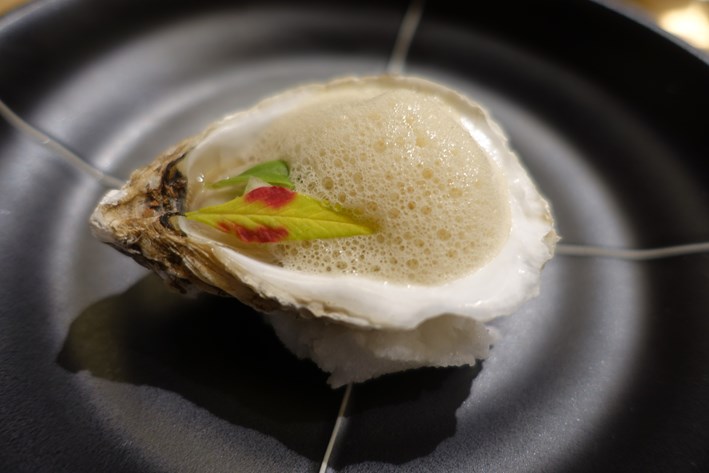

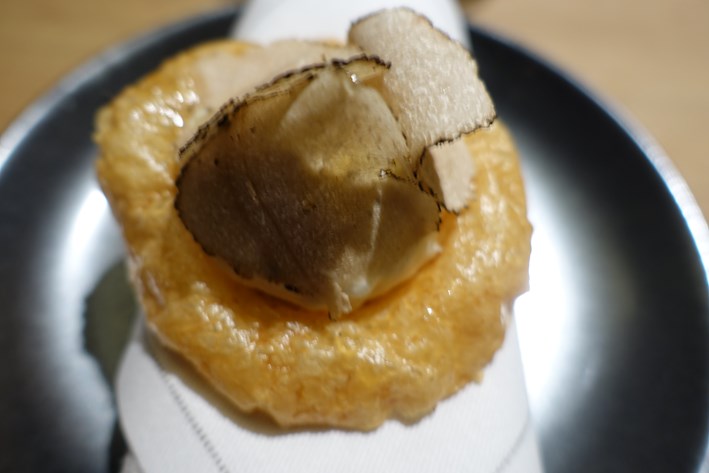
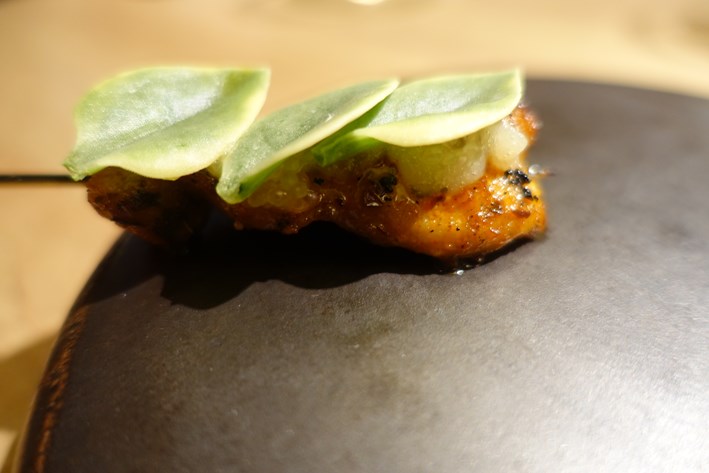
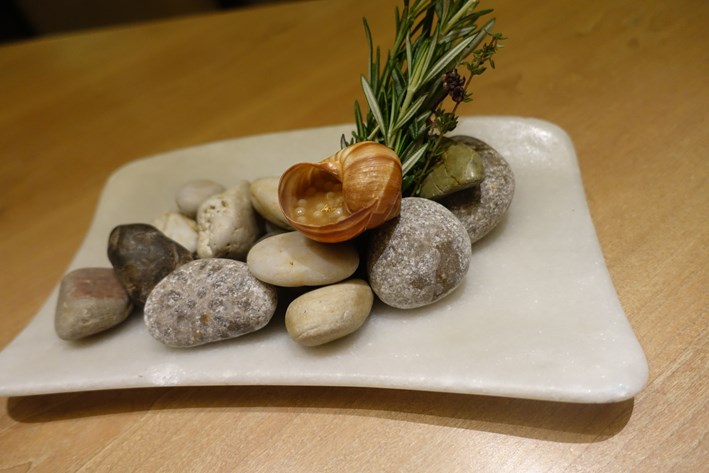
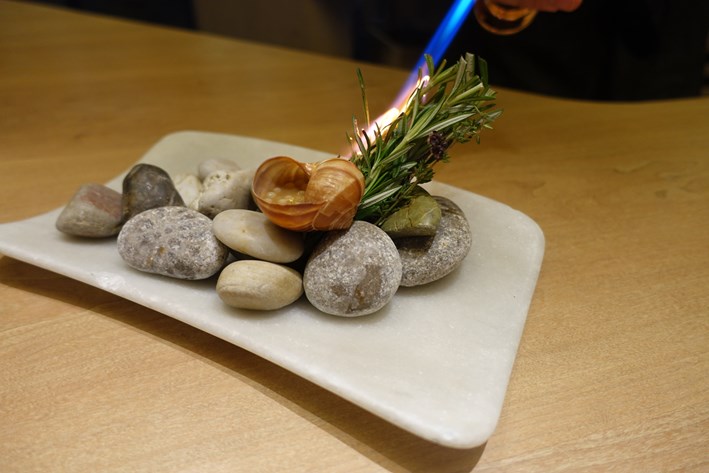
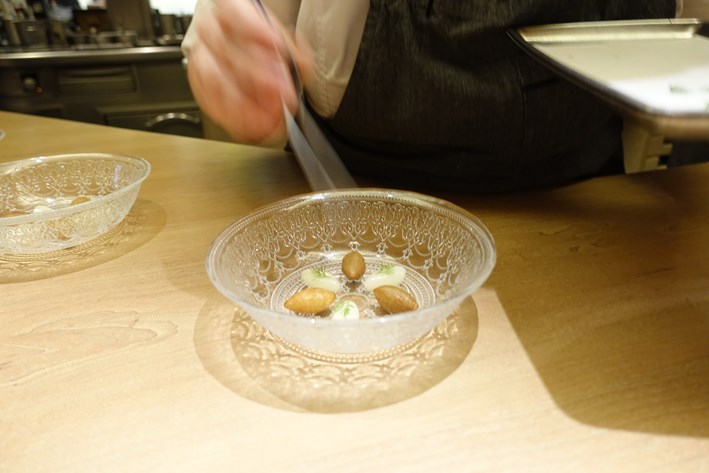


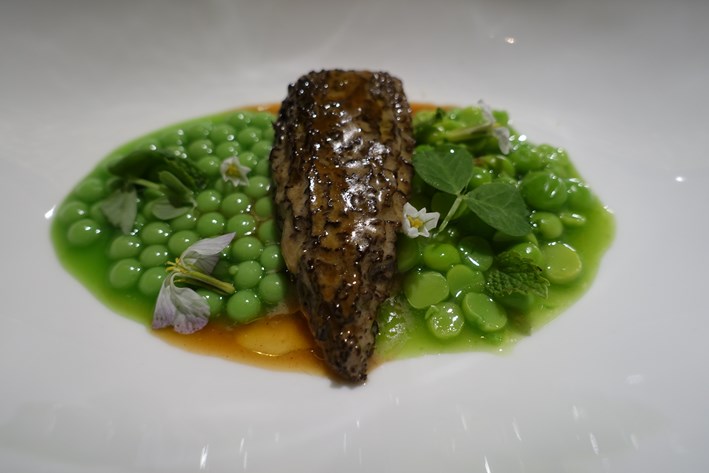
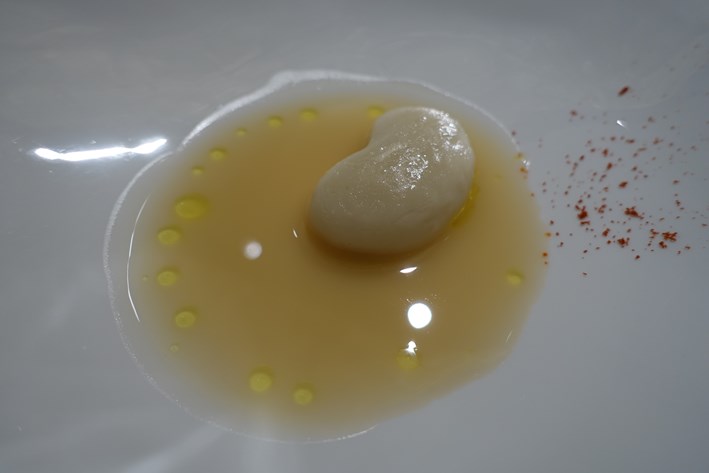
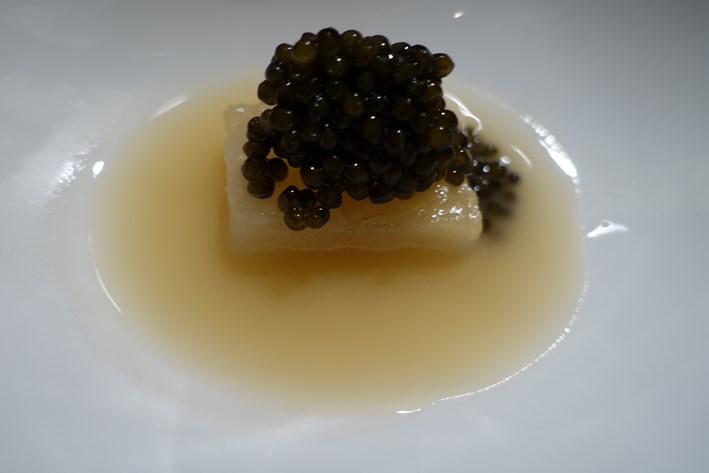


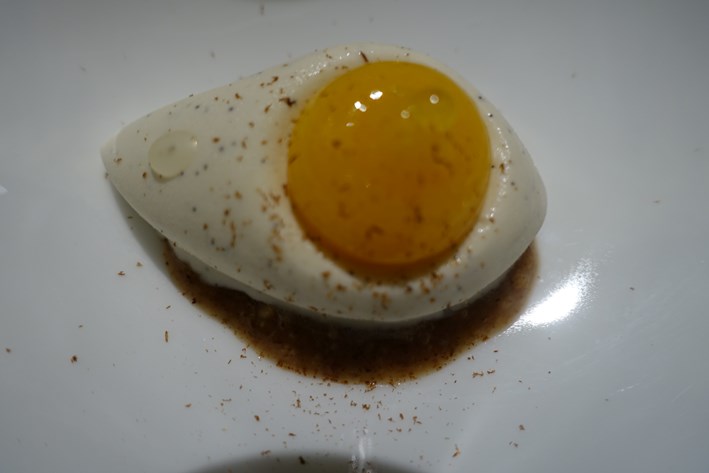


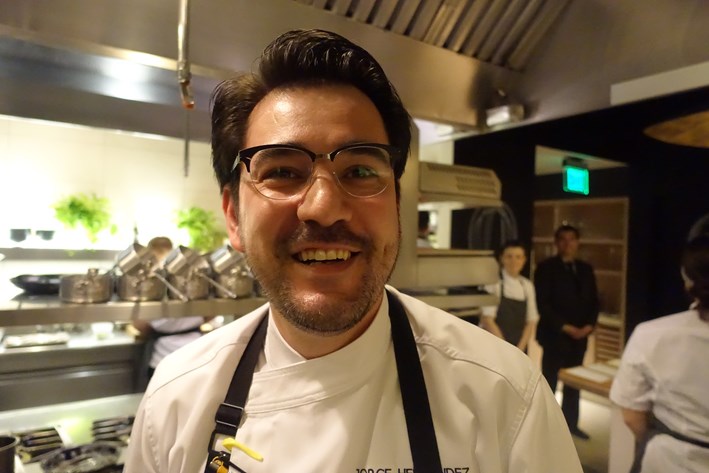

Khoi Tran
For the unagi salmorejo course, my understanding is that it's actually salmorejo canario which is a meat marinade used in the Canary Islands. It's typically brushed on rabbit meat before cooking to make the famous Canarian dish. The flavor comes from garlic, paprika, and hot peppers.